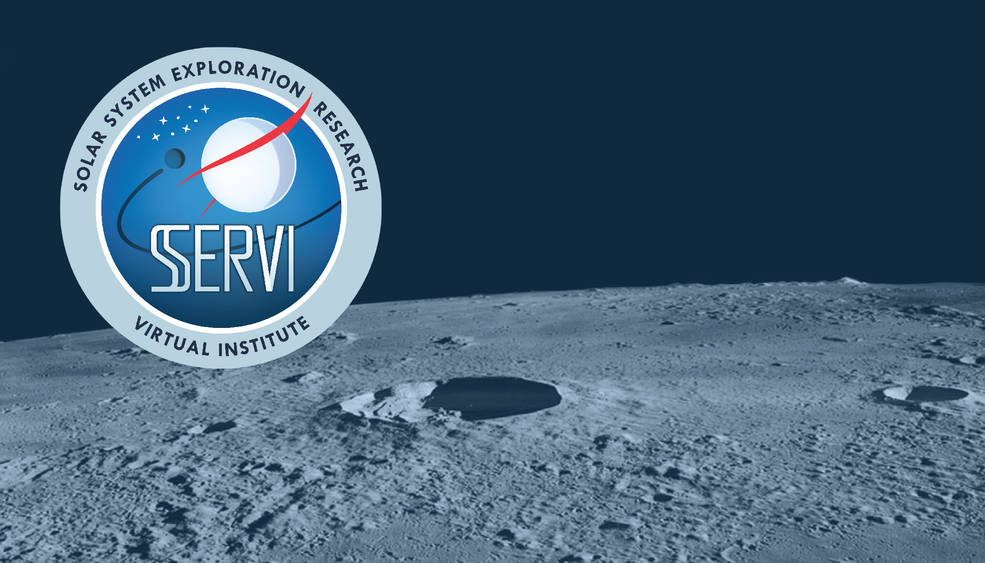NASA has selected eight new research teams to collaborate on research into the intersection of space science and human space exploration as part of the Solar System Exploration Research Virtual Institute (SSERVI).
“The discoveries these teams make will be vital to our future exploration throughout the solar system with robots and humans,” said Lori Glaze, director of the Planetary Science Division in NASA’s Science Mission Directorate.
SSERVI will support the new teams for five years at a combined total of about $10.5 million per year, funded by NASA’s Science and Human Exploration and Operations Mission Directorates. They will join four current SSERVI teams to conduct fundamental and applied research about the Moon, near Earth asteroids, and the Martian moons Phobos and Deimos and their near space environments. Work will take place in cooperation with U.S and international partners.
“SSERVI continues to strengthen the collaboration between exploration and science as we prepare to go forward to the Moon with a new era of human exploration,” said Marshall Smith, director of Human Lunar Exploration Programs within NASA’s Human Exploration and Operations Mission Directorate.
The new SSERVI teams, selected via peer review from a pool of 24 competitive proposals, are:
- Center for Lunar and Asteroid Surface Science (CLASS), led by Dan Britt at the University of Central Florida (UCF) in Orlando. The UCF team will study regolith – soil-like material on other planetary bodies – of the Moon and asteroids, specifically looking at the physical properties and resources of regolith and its behavior in the space environment. CLASS also will create soil simulants that will help other teams and the broader science community in this research area.
- Interdisciplinary Consortium for Evaluating Volatile Origins (ICE FIVE-O), led by Jeffrey Gillis-Davis at the University of Hawai‘i at Mānoa in Honolulu. This team will focus on remote sensing of airless bodies and how things weather in space. It also will model the physical, chemical, and isotopic signatures around the Moon’s polar regions. ICE FIVE-O will address curation protocols for sample return and the evolution of volatiles, or low-boiling point compounds, and minerals within long-duration, curated samples.
- Remote, In Situ, and Synchrotron Studies for Science and Exploration 2 (RISE2), led by Timothy Glotch at Stony Brook University in New York. This team will investigate how planetary environments impact human health by looking at the chemical reactivity of regolith in association with animal cells and tissues. RISE2 also will analyze how remote sensing datasets can be confirmed through laboratory experiments, analyses, and field deployments.
- Resource Exploration and Science of OUR Cosmic Environment (RESOURCE), led by Jennifer Heldmann at NASA’s Ames Research Center in California’s Silicon Valley. This team focuses on determining what volatiles are available on the Moon for in-situ resource utilization. It will assess the quantity and availability of resources on the Moon, test the technology required for processing those resources, and field test the concepts of operations required for sustained human lunar presence.
- Institute for Modeling Plasmas, Atmospheres, and Cosmic Dust (IMPACT), led by Mihaly Horanyi at the University of Colorado Boulder. This team will measure micron-sized dust impacts in icy regolith using the world’s fastest “dust impact” facility, and they will develop hardware to determine secondary particle generation and examine how that hardware degrades over time. IMPACT also will use laboratory experiments to help validate theories of dust and volatile mobility and modeling efforts being completed by other SSERVI teams.
- Lunar Environment And Dynamics for Exploration Research (LEADER), led by Rosemary Killen at NASA’s Goddard Space Flight Center in Greenbelt, Maryland. This team will focus on plasma interactions with airless bodies and determine the effects of the space environment on robotic and human assets at various geographic locations on the Moon. The team also will model the radiation environments and related effects associated with space exploration.
- Center for Lunar Science and Exploration (CLSE), led by David Kring at the Lunar and Planetary Institute in Houston. Through modeling and geochemical analyses, this team will track the distribution and form of volatiles from the early solar system to the formation of the Moon and subsequent evolution to today. This team will analyze the volatile cycle on the Moon to determine overall source and loss mechanisms and how we can use these resources.
- Geophysical Exploration Of the Dynamics and Evolution of the Solar System (GEODES), led by Nicholas Schmerr at the University of Maryland in College Park. This team will use geophysical modeling and laboratory techniques to characterize the overall evolution, stability, and volatile content of the Moon and asteroid subsurfaces. GEODES will test its theories through analog field campaigns in conjunction with other NASA/SSERVI instrument testing efforts.
“We are extremely pleased that the community responded with such high-quality proposals, and look forward to the many contributions new SSERVI team members will make in addressing NASA’s science and exploration goals,” said Greg Schmidt, the Institute’s director at Ames.
Based and managed at Ames, SSERVI was created in 2014 as an expansion of the NASA Lunar Science Institute. It supports scientific and human exploration research at potential future human exploration destinations under the guiding philosophy that exploration and science enable each other. SSERVI members include academic institutions, non-profit research institutes, commercial companies, NASA centers and other government laboratories.
For more information about SSERVI, visit:
-end-
